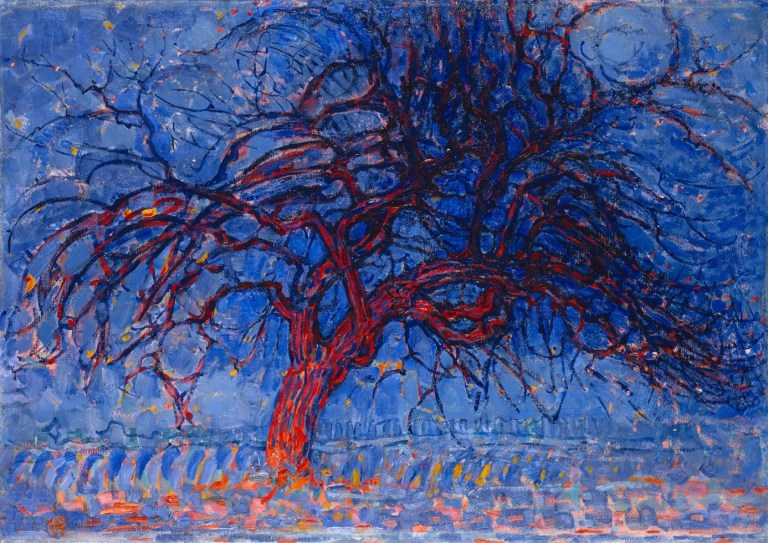Home Art Project 1: Mondrian’s tree
Piet Mondrian’s “Evening; Red Tree” takes as its starting point the form of the tree. With its arching trunk, dense twisting branches, brisk application of paint and vibrant colours the work imbues the tree with a sublime energy, growth and vitality
The work follows in an ongoing investigation of colour, form and composition within the European art tradition which began with Impressionist painting. The rhythmic forms of the trunk and branches break up the blue background. A rhythm is also present in the application of paint with the juxtaposing of warm and cool colours across the trunk and branches.
The tree is placed in the centre of the composition. The strong curves of the tree trunk carry the eye through the sweeping arch of the trunk and then into multiple smaller curves and twirls in the branches. This placement within the picture plain sets up a strong, imposing composition.
The colours chosen are used for their expressive qualities. The warm red and orange vibrate against the cooler blue background. The yellow, pink and orange dabs also form a rhythm in the description of the ground at the base of the tree. Orange sits on opposite side of blue on the colour wheel (three primary colour).

Your project this week is to find a tree you can draw or paint from and use some of the elements present in Mondrian’s tree.
Think about:
- Where to place the tree on the page or canvas and how does that effect the composition.
- Do you detect a subtle rhythm in the tree you are observing, through the repetition of certain elements such as lines, forms or shapes? Is there a way in which you can describe a rhythm or lack of rhythm in your work using lines, shapes or marks?
- If you are using colour, which colours best describe tree that you are describing?
Children’s Text: Mondrian’s tree
In the painting by artist Piet Mondrian called “Evening; Red Tree”, we can see a tree with a bent trunk and twisting branches against a blue background. The trunk is painted in red, orange and blue.
The tree is placed in the centre. We can follow the curve of the tree trunk through the sweeping arch of the trunk and then into multiple smaller curves and twirls in the branches.
The warm red and orange stand out against the cooler blue background. Orange sits on the opposite side of the colour wheel to blue.
Your project this week is to find a tree you can draw or paint from and use some of the elements present in Mondrian’s tree.
Think about:
- Where to place the tree on the page or canvas. Which position do you think might look best?
- Do you see any repetition of lines or shapes in the tree? Is there a way in which you can use those lines, shapes or in your drawing or painting?
- If you are using colour, which colours best describe tree that you are describing?